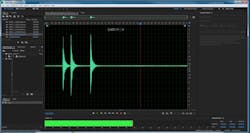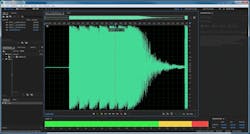How to Improve Emergency Response During Active Shooter Events
Recent shootings in the U.S. have reignited conversations about worker safety and how facilities can prepare for an active shooter event. In this article, we’ll answer some frequently-asked questions about new technologies and standards meant to improve emergency response and reduce the impact of active shooter events.
What are the biggest challenges for today’s safety personnel and first responders when dealing with an active shooter scenario?
The unpredictability of shooting events is a major obstacle and can create challenges for responders. It’s important to understand that it is impossible to prevent every active shooter event, and steps can be taken to help first responders and law enforcement mitigate the threat faster to help reduce the number of casualties.
For example, communication between people at the scene and law enforcement has proven to be one of the biggest challenges. Active shooter incidents often happen very quickly, and multiple reports coming from the scene tend to have conflicting or unclear information. This can lead to longer incident duration due to lack of confirmed information about who the shooter is, how many shooters there are, and where they are located.
How can technology help address these communication challenges?
Today’s workplaces and businesses are employing indoor shot detection to help reduce or eliminate delays and errors common in witness-initiated responses to active shooter incidents.
Early detection can set off a variety of responses, including alerting occupants to the location where shots were fired while triggering building alarms, emergency notifications, evacuation and sheltering procedures. It also allows emergency personnel to remotely monitor video of the situation while providing first responders with crucial information.
Early and accurate detection combined with precise and clear communication also keeps occupants informed in real time. This vital information may help them find a safe exit from the building or a secure area to shelter in place from the threat while security personnel and police respond. Recent tests have shown that shot detection technology enables law enforcement to respond and mitigate a threat up to 60% faster, when compared with facilities that are not equipped with the technology.
Waveform representing multiple shots from a handgun.
Waveform representing automatic weapons fire.
How does gunshot detection technology work?
There are several ways to detect gunshots in a building. Some shot detection systems use single-factor acoustic verification to detect gunshots. These systems use acoustic sensors to capture a sound and develop an acoustic signature, then use computer-based signal processing to validate if the sound is a gunshot. This data is then used to determine the precise location of the shot.
Other systems use multi-factor authentication, where two or more sensing technologies are grouped together. These technologies can include the acoustic signature from a muzzle blast and/or from the shockwave of a bullet passing through the sensor field, changes in barometric pressure triggered by a shockwave, an optical flash (also known as infrared signature) from the ignition of explosive gases in the ammunition propellant, and comparison of the acoustic signature against an audio database of other gunshots.
Unfortunately, multi-factor authentication can fail to recognize an active shooter event if one type of detection is not authenticated due to the configuration of the space. For example, if an active shooter system requires both acoustic and muzzle flash authentication, wall sensors will pick up the gunshot, but muzzle flash may be masked by partitions or walls separating cubicles, offices or classrooms. While acoustic sensors can detect sound through walls and corners, infrared sensors can only pick up flashes within its line of sight.
What features should safety and facility managers look for in a gunshot detection system?
To maximize effectiveness, a gunshot detection system should support multiple integration options, including video feeds from existing CCTV and intrusion systems, mass notification systems, access control systems and panic button/manual initiation systems.
In the future, the integration of shot detection into existing life safety systems will enable facilities to leverage the infrastructure already in place. After detection occurs, mass notification to occupants, first responders and law enforcement can be sent through the same systems used for fire detection. Like all life safety systems, redundancies will be built into shot detection technology to ensure continuous uptime.
What has the life safety industry done to help security personnel and first responders prepare for an active shooter event?
The National Fire Protection Association (NFPA) recently introduced the NFPA 3000 Standard for an Active Shooter/Hostile Event Response (ASHER) Program. It is the first standard from NFPA that provides guidance to facility managers and law enforcement for the preparation and response to active shooter events, as well as guidance for post-event recovery.
The purpose of the standard is to identify the program elements necessary to organize, manage and sustain an active shooter or hostile event response program. The standard is meant to address operations, including the responsibilities of key personnel and recommended processes for setting up an active shooter response program.
For example, the standard dictates that organizations and authorities having jurisdiction must evaluate the need for a mass notification system in a facility. Organizations must also develop pre-scripted mass warning messaging that displays preparedness measures and protective actions to building occupants. Those pre-scripted mass warning messages need to include certain information, including identifying who sent the alert and when it was sent, what is happening, who is affected, and what actions should be taken.
What other tips do you have for selecting and implementing gunshot detection technology?
You should always find out who is testing the system. The rise of active shooter incidents has led to a sharp increase in the availability of shot detection technology. However, not all shot detection systems are created equally. Test standards, which are critical to authenticating performance claims, are currently in the early stages of development.
Life safety systems, such as those used for fire detection, are tested by organizations including Underwriters Laboratory (UL) and Factory Mutual (FM) against standards accepted by the industry. Developers of gunshot detection systems will soon be required to meet similar standards.
Sensor placement is also important to understand. Acoustic sensors are most frequently mounted in ceilings or on walls. Some people recommend placing sensors in areas where large numbers of people congregate like cafeterias, gymnasiums or auditoriums. However, this is not necessarily where the first shots take place. Other variables—including building access, approach, motive and opportunistic actions taken by the shooter—can all play into the location of the first shots. Spaces such as entryways and hallways may be the most effective areas to detect first shots.
It is important to note that system design will never be able to cover 100% of a building. This technology should be part of a comprehensive campus safety plan developed by security professionals who can create a risk and threat assessment and discuss options with the building managers.
When determining what system will best fit your requirements, ensure the technology provider gives you a clear system design illustrating areas of coverage. Above all, make sure to involve your local law enforcement and stakeholder emergency response agencies in the decision-making process.
Thomas Connell II is senior manager, life safety systems, Johnson Controls Global Fire Detection (www.johnsoncontrols.com/fire-detection). He has lent his expertise to the National Fire Protection Association, University of Maryland Fire and Rescue Institute, the International Fire Service Training Association, Oklahoma State University and ANSI’s Homeland Security Standards Panel.


